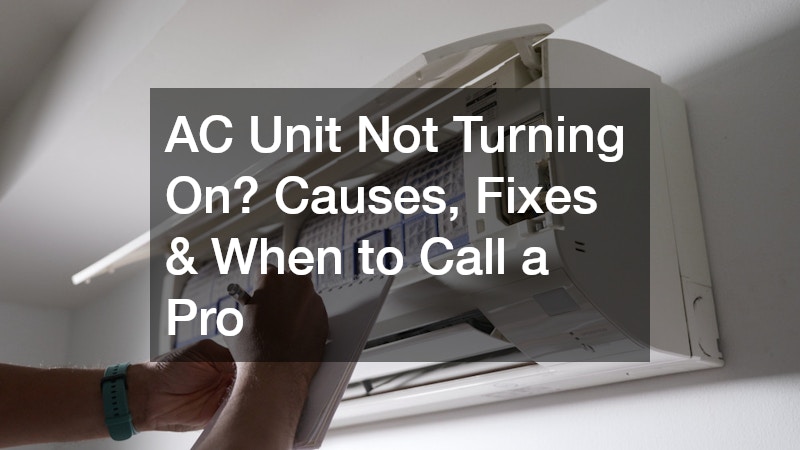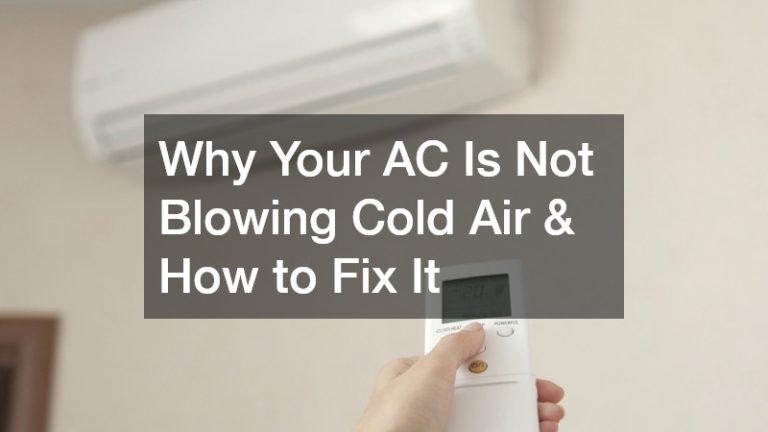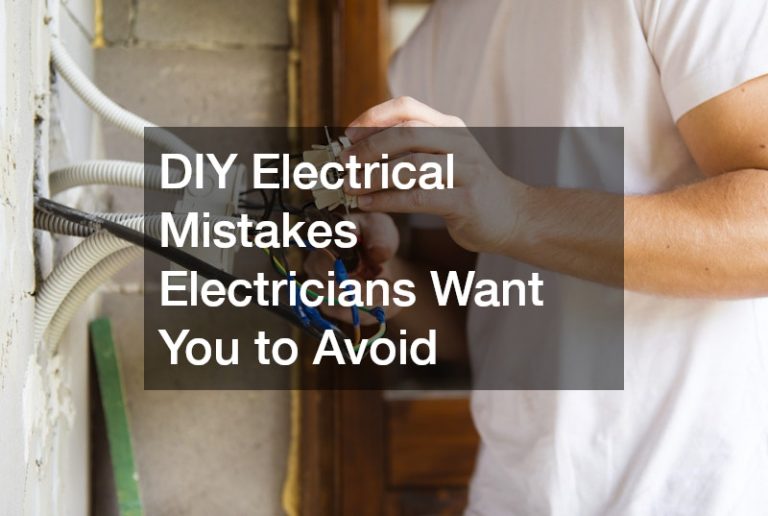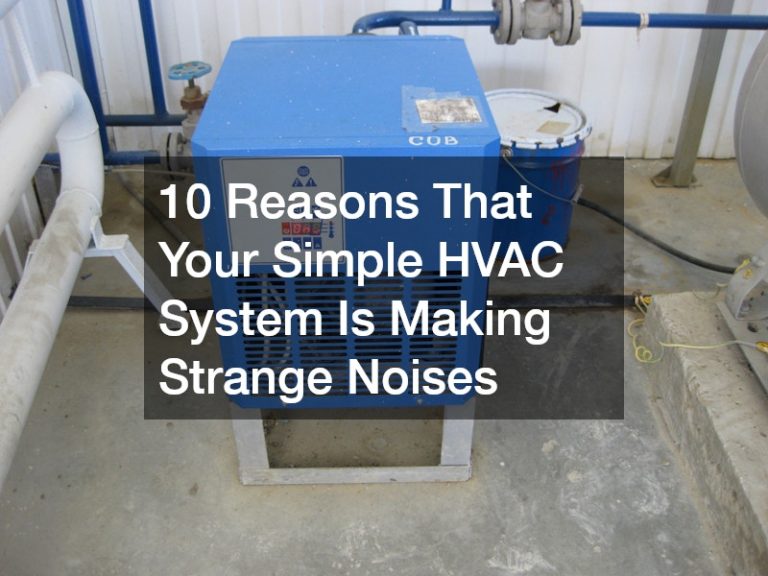When the summer heat kicks in, few things are more frustrating than flipping the thermostat switch only to find your AC unit not turning on. This issue can happen for a variety of reasons, ranging from simple power supply problems to more complex electrical or mechanical failures.
If you’ve ever found yourself sweating in your living room, wondering why your air conditioner refuses to start, this guide will help. We’ll cover the most common causes, steps you can take before calling an HVAC technician, and what to expect when professional repairs are needed.
Why Your AC Unit Might Not Be Turning On
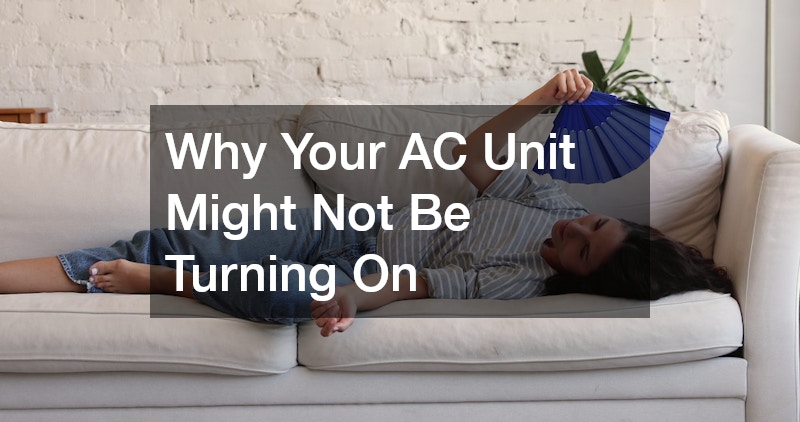
Understanding the possible causes is the first step toward a solution. Here are the most common reasons your AC may fail to start:
- Tripped circuit breaker or blown fuse – Power issues are one of the most frequent culprits.
- Faulty thermostat – If the thermostat isn’t working properly, it won’t send the signal to your AC to start.
- Clogged air filter – Restricted airflow can cause overheating, leading the system to shut down as a safety measure.
- Dirty condenser unit – Debris and dirt around the outdoor unit can prevent it from starting up correctly.
- Refrigerant leaks – Low refrigerant can prevent the system from cooling effectively, and in some cases, keep it from turning on.
- Frozen evaporator coil – Ice buildup can block air movement and trigger the system to shut down.
- Electrical issues – Loose wiring, faulty capacitors, or control board problems can all prevent the AC from starting.
First Things to Check Before Calling for Help
Before you panic and assume the worst, try these basic troubleshooting steps. Many times, the solution is simple:
- Check the thermostat settings
- Make sure it’s set to “cool” and the fan is on “auto.”
- Replace the batteries if it runs on them.
- Inspect the power supply
- Check your home’s breaker panel to see if the circuit for the AC has tripped.
- If so, reset it, but if it trips again, call a professional.
- Examine the air filter
- A dirty filter can block airflow and prevent the system from starting.
- Replace it with a clean one if necessary.
- Look at the outdoor condenser unit
- Remove any leaves, branches, or dirt that may block the fan or coils.
- Press the reset button
- Some units have a reset switch that can restart the system if it shut down due to a minor fault.
By running through these quick checks, you may be able to get your AC running again without spending money on a service call.
When It’s More Than a Simple Fix
Sometimes the problem is more complicated and requires professional expertise. If you’ve gone through the basic troubleshooting list and your AC unit is not turning on, these may be the causes:
- Faulty Thermostat
A thermostat that doesn’t send signals to the AC unit will prevent it from turning on. Replacing an old or malfunctioning thermostat can often solve this problem.
- Electrical Problems
Faulty wiring, bad capacitors, or a damaged control board can prevent the unit from powering on. These issues can be dangerous to handle without proper training, so it’s best to let an HVAC technician address them.
- Refrigerant Leaks
Low refrigerant levels may cause your AC to stop cooling, and in severe cases, prevent it from starting altogether. This requires professional leak detection and recharging.
- Frozen Evaporator Coil
If your AC runs but quickly shuts down, a frozen evaporator coil might be to blame. This can happen from restricted airflow or low refrigerant.
Signs That Point to a Bigger Problem
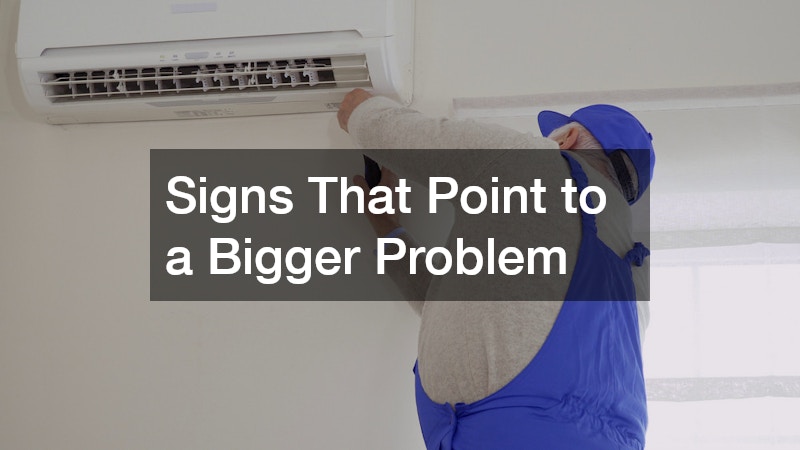
Sometimes, even if the AC does turn on, you’ll notice signs that something is wrong. Addressing these early can prevent a total breakdown:
- AC runs but doesn’t cool effectively (ac not blowing cold air)
- Unit makes loud buzzing or clicking sounds before shutting off
- Circuit breaker keeps tripping when the AC tries to start
- Warm air blowing through vents despite thermostat settings
- Ice forming on refrigerant lines or the evaporator coil
If you experience these issues in addition to your unit not turning on, it’s best to schedule an HVAC inspection.
DIY Maintenance to Prevent AC Problems
Even if you manage to get your system running again, prevention is the best approach. Here are some easy maintenance tips to keep your AC in good shape:
- Change air filters every 1–3 months depending on usage and household factors like pets.
- Keep the outdoor unit clean by trimming plants, removing debris, and hosing off dirt buildup.
- Check thermostat batteries at least once a year.
- Schedule annual tune-ups with an HVAC technician to catch small problems before they become major.
- Inspect ducts for leaks or blockages that can restrict airflow.
When to Call an HVAC Technician
If basic troubleshooting doesn’t solve the problem, it’s time to call a professional. You should contact a licensed technician if:
- The breaker continues to trip after resetting.
- You suspect a refrigerant leak.
- The thermostat replacement doesn’t fix the issue.
- You see water pooling around your unit.
- The unit makes unusual noises before shutting down.
Attempting complex repairs without training can lead to safety hazards or further damage. A technician will be able to run diagnostics, identify the root cause, and recommend the right fix.
Costs of Common AC Repairs
If you’re worried about repair costs, here’s a breakdown of what you might expect:
- Thermostat replacement: $100 – $300
- Capacitor replacement: $150 – $350
- Refrigerant recharge (depending on type): $200 – $600
- Control board replacement: $300 – $600
- Fan motor replacement: $400 – $800
These are average ranges, and actual prices may vary depending on your location, system type, and technician rates.
Should You Repair or Replace Your AC?
If your AC is more than 10–15 years old, frequent breakdowns may mean it’s time for a replacement. A new, energy-efficient unit can lower your electricity bills and reduce costly repairs. Consider replacement if:
- Repairs cost more than half the price of a new system.
- Your unit requires refrigerant that is being phased out.
- You’ve had multiple service calls in the past two years.
Final Thoughts
An AC unit not turning on can be stressful, especially in the middle of summer. Luckily, many problems have simple solutions, such as checking your thermostat, replacing filters, or resetting a breaker. If the issue persists, however, it’s best to contact an HVAC technician to avoid making things worse.
With regular maintenance, timely repairs, and professional help when needed, you can keep your cooling system running efficiently for years to come.
